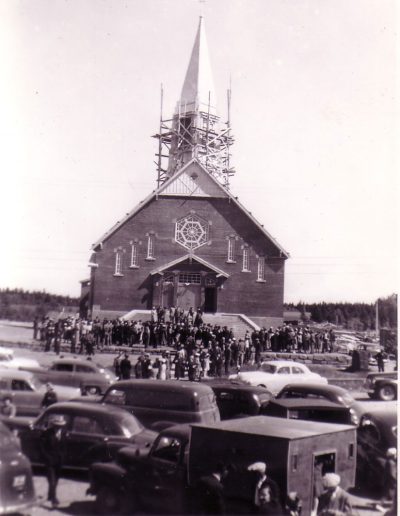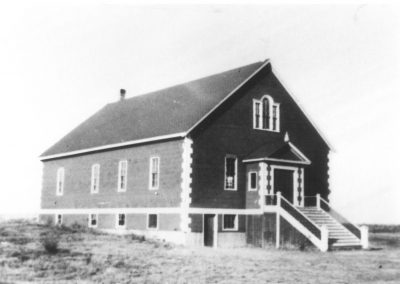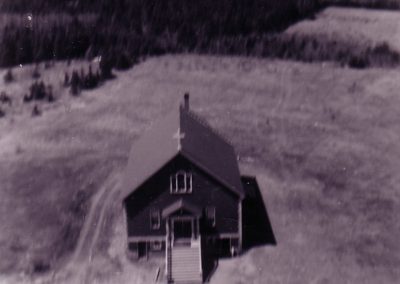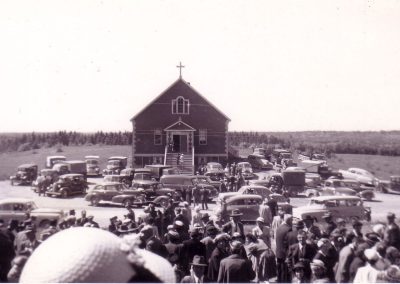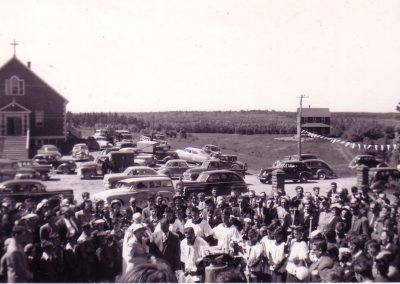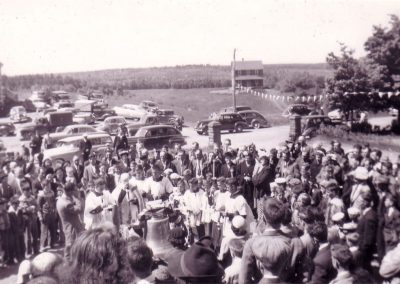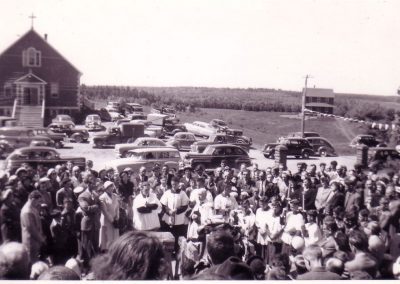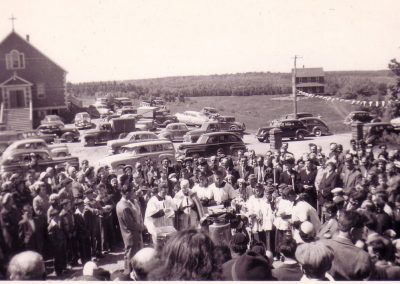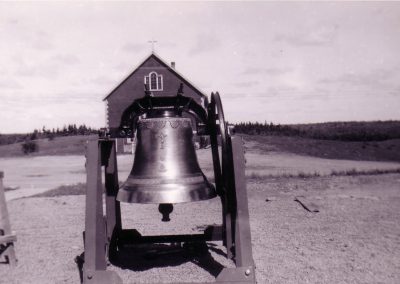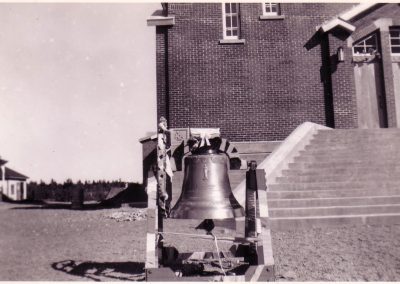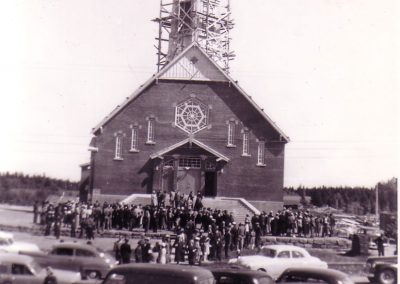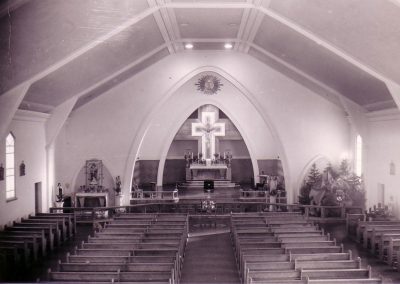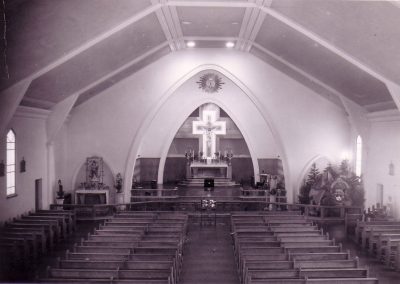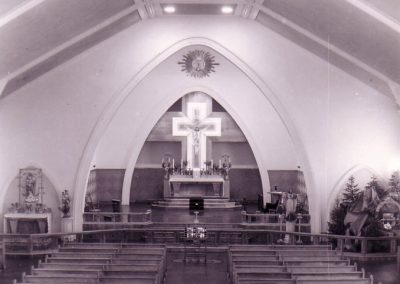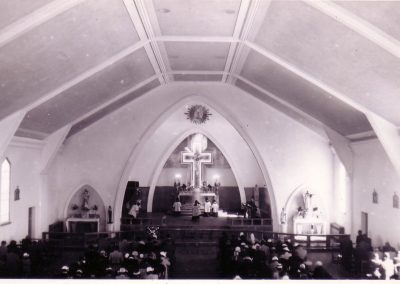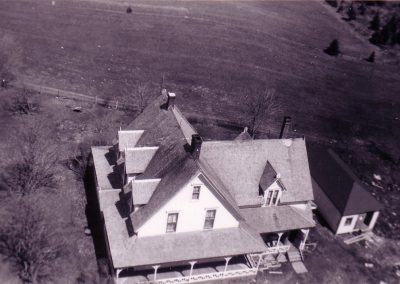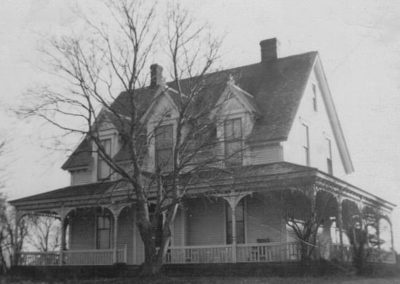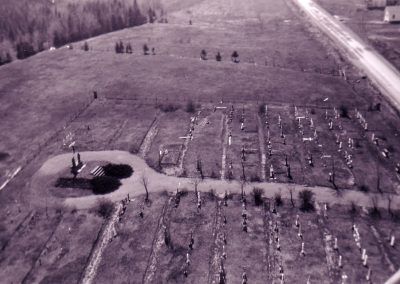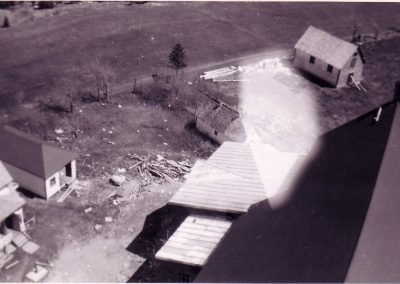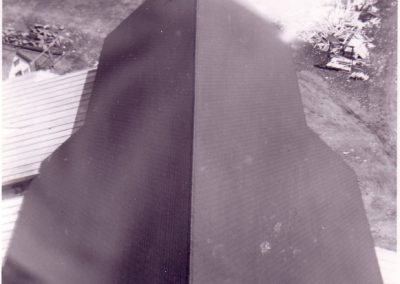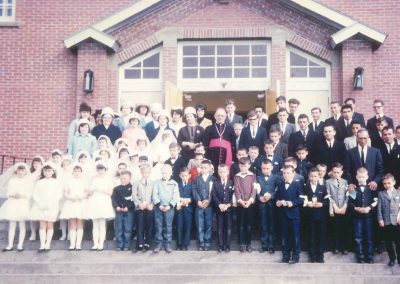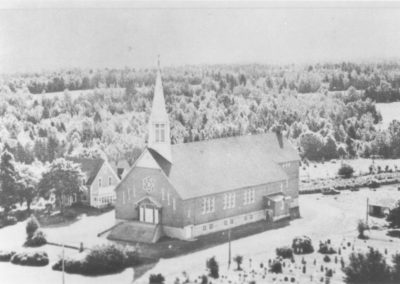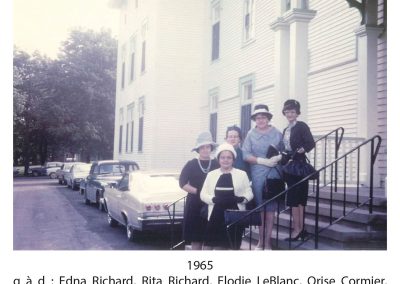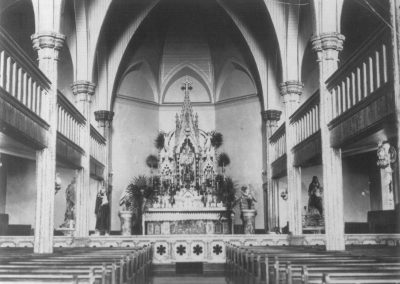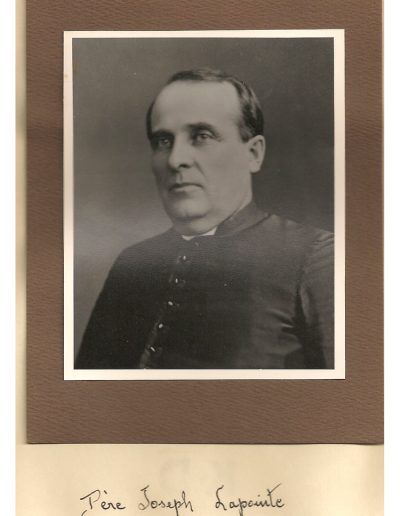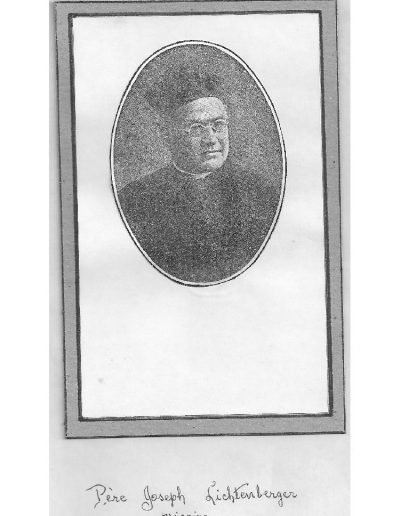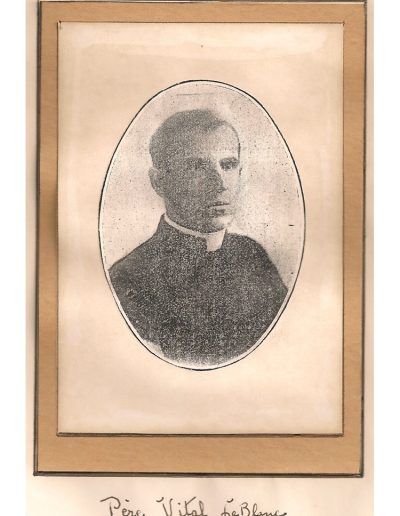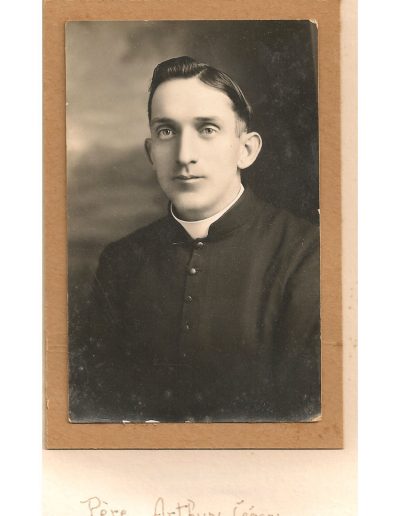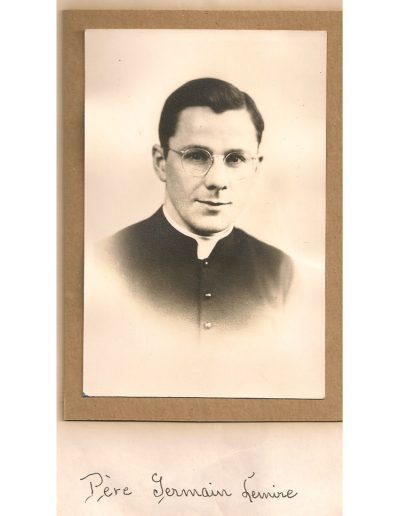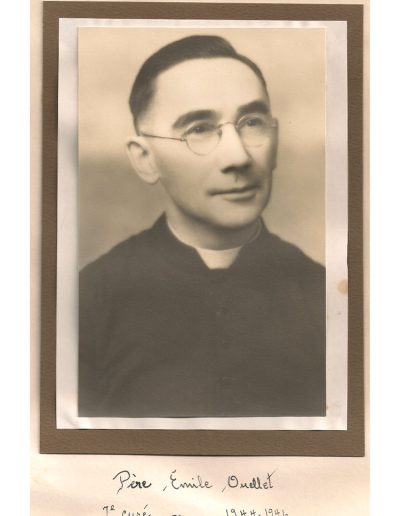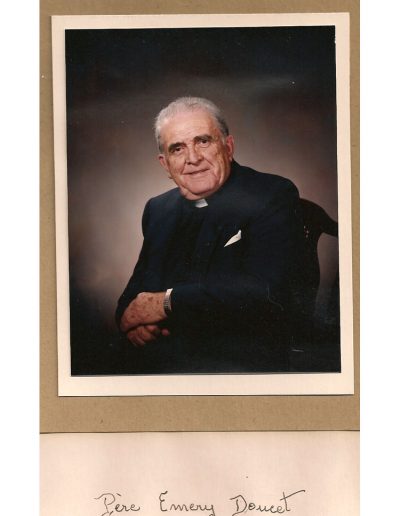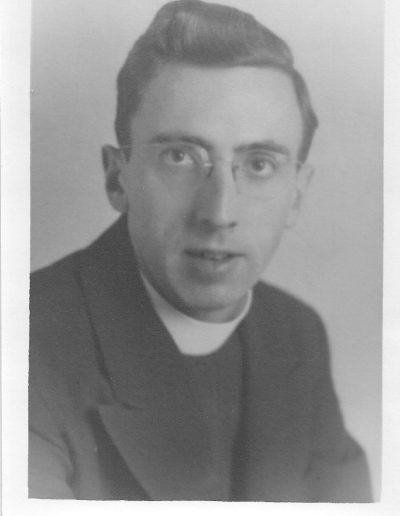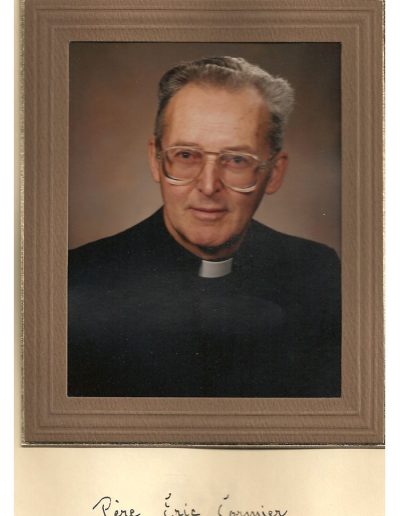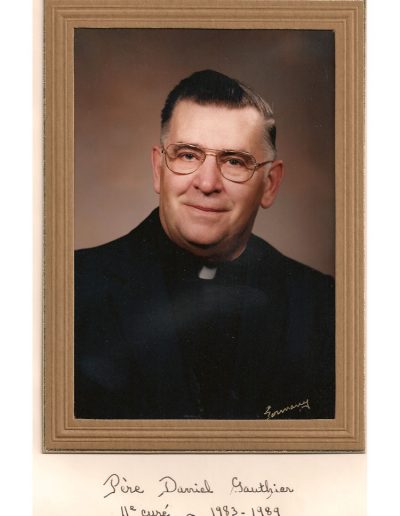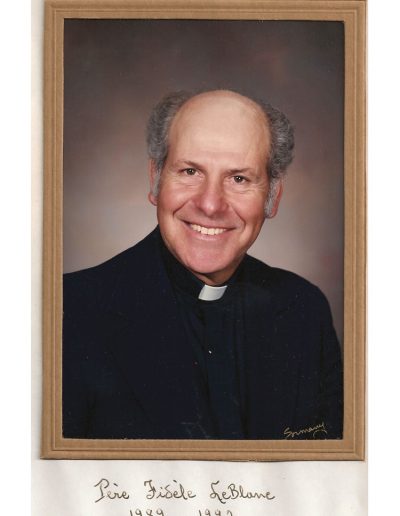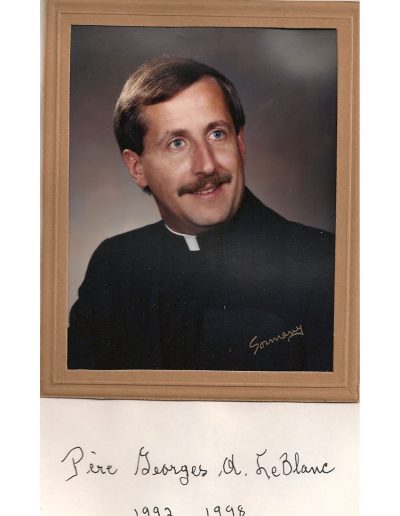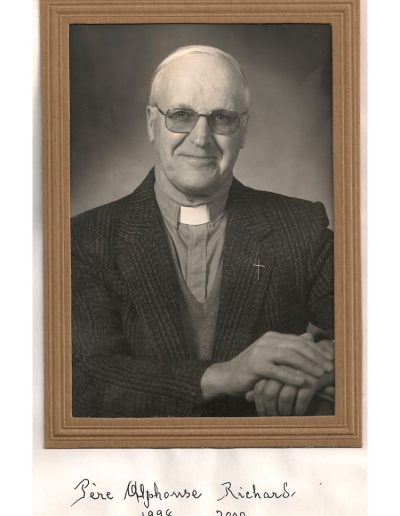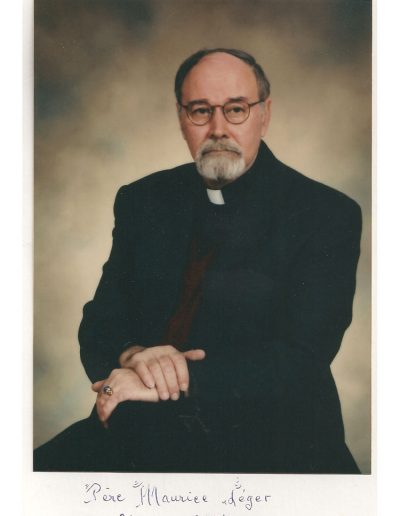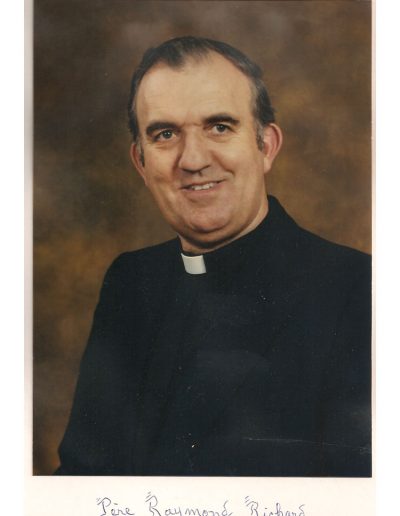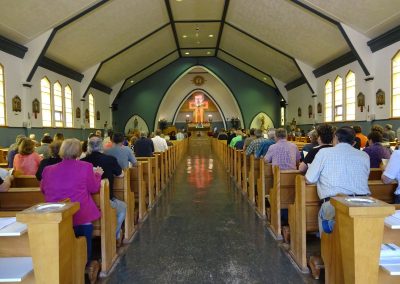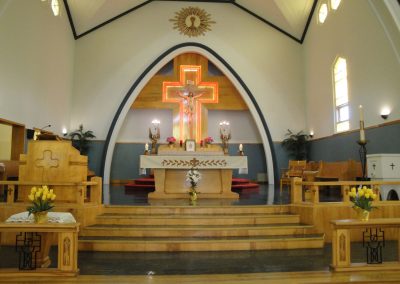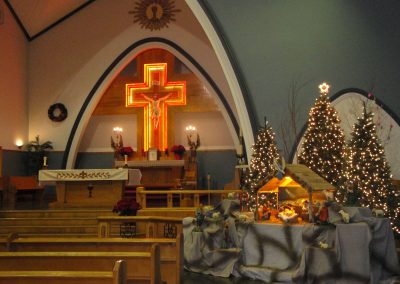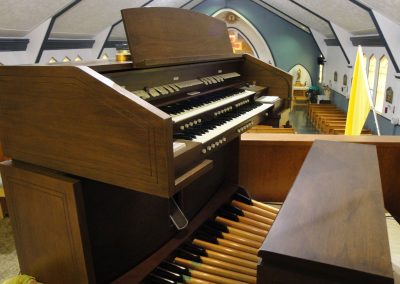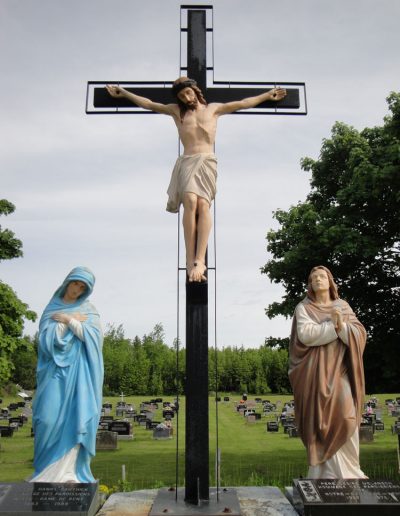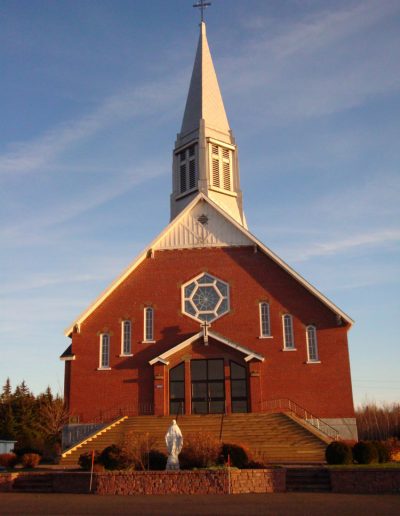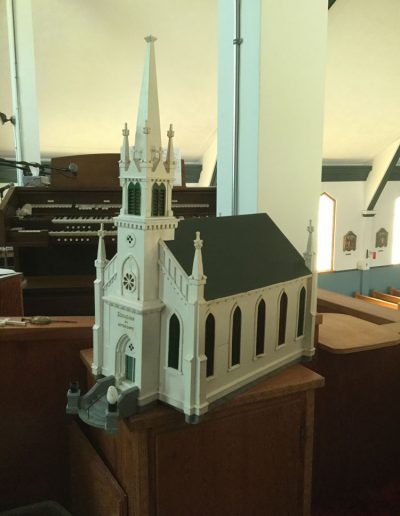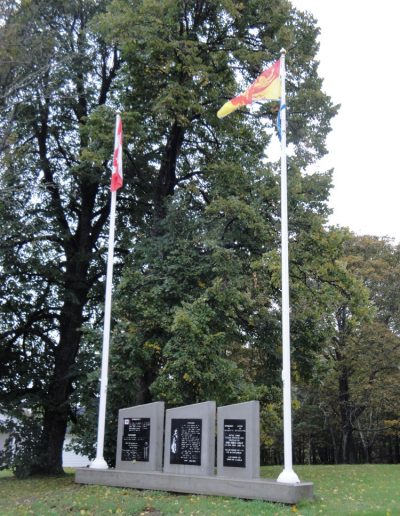Église Notre-Dame-du-Sacré-Cœur
As early as the 1850s, visiting priests served the needs of the catholic residents of Notre-Dame. They came from neighbouring Cocagne where the Parish of St-Pierre was well established. After years of work to establish a parish, Notre-Dame greeted its first resident priest in 1889. The Parish of Église Notre-Dame-du-Sacré-Coeur was established and served Notre-Dame as well as neighbouring Saint-Antoine until it founded its own parish, twenty-five years later.
Today, the church remains very active. Several committees and teams volunteer to ensure all necessary work is done and functioning smoothly. The large presbytery, built in 1980, houses the parish office and there is a well-appointed apartment for the priest.
Historic Documents (PDF download)
- Père Dufour and Thomas Poirier 1897
- List of priests and nuns (Past & Present)
- A bibliography of priests
- Articles Churches ND 1926 & 1939
- Article church destroyed 1945
- Tilmon Richard plays and sings an 80th Christmas mass
- Church booklet 17 nov 2014
- Church booklet june 2017
Historic Photos
Former priests photos
Recent Photos
1861
Construction of a Catholic chapel began in Dufourville. Unfortunately, it was destroyed by a strong wind before being completed. Mass was therefore celebrated in a private home until a new church was built in 1866. Abbé Antoine Gosselin, from Cocagne Parish, was the visiting priest from 1855-1862.
1865
Cocagne Parish priest, Abbé Antoine Gosselin, conducted a census of the Catholic population in Notre-Dame and recorded thirty-eight families (two hundred and thirty-five souls).
Abt 1866
A small 40 by 30-foot church was built in Notre-Dame and its construction was overseen by Father J.M. Vanier, assistant to Abbé Gosselin who was the second resident priest of Cocagne and served there until 1875. Previously, the community had been a mission of Cocagne which was served by missionaries from Gédaïc (Shediac) until 1842 when the mission was reorganised and became a mission of Bouctouche. In 1862, Abbé Henri Berthe became the first resident priest in Cocagne. He was succeeded by Abbé Gosselin in 1863.
Spring 1866
Father F.X.-J. Michaud (Cocagne and Notre-Dame visiting priest), Presbyterian Minister M. Murray, and Gilbert Girouard teamed together and lobbied to get a railway line built between Bouctouche and Moncton. Construction of the 30-mile-long railway line began in 1886 and was completed the following year, being built by locals. After years of slow overland and river transportation, the train greatly stimulated the area economy. The lumber industry was booming. Extensive wood operations were being carried out to produce hulled tan bark, logs, barrel wood, and cord wood. The train offered a passenger service which was a popular means of transportation for the local population. The train passenger service was offered until 1955.
1888
The building of a new Catholic church in Notre-Dame began under the supervision of Father F.X. Cormier (Église Saint-Pierre, Cocagne) and was completed under the supervision of Father Honoré Ouellet. Pierre Bourque had donated the land. Unfortunately, this church was destroyed by fire in 1945.
1889
A territory was established for the new church, the parish was canonized, and the community welcomed its first resident priest, Père Honoré Ouellet, who stayed until 1897. Between 1889 and 1923, the parish of Notre-Dame served the neighbouring community of Saint-Antoine.
According to the Acadian newspaper L’Évangeline, Père Honoré Ouellet died January 20, 1898, three months after leaving Notre-Dame. One source indicated that he died in the parish of Ste-Cunégonde-de-Montréal. He had also been vicar in Cocagne, Cap-Pelé, and Shediac. He was born in Sainte-Anne-de-la-Pocatière, Kamouraska, QC on December 13, 1834, and his parents were Honoré and Marie (Bérubé) Ouellet.
1897
Father Paul Dufour arrived in Notre-Dame in September 1897 to serve as the community’s second resident priest. He was thirty-four years old, and a time when the community was bustling and growing quickly. In 1907, he traveled to Europe and Palestine. After serving the parish for sixteen years, Father Dufour left in October 1913.
Paul Dufour was born in Madawaska, Maine, in 1864 in the parish of St David, ME. He studied at Collège Saint-Joseph (Memramcook, NB) and at the Gd. Séminaire de Québec. He was ordained in 1891 at the age of twenty-seven.
His mother was Eleonore Marie Thibodeau Dufour, born in 1824 and died May 4, 1872. His father was Narcisse Dufour, born September 15, 1815, and died March 15, 1897. His paternal grandparents David Joseph Dufour and Charlotte Pothier Dufour came from Saint Louis-de-Kamouraska, QC and they died in Saint Basile, NB.
Father Paul Dufour died January 30, 1938, in Montréal, QC. He is buried in Saint Joseph Cemetery in Old Town, Penebscot, Maine.
The settlement of Dufourville was named in honour of Père Dufour and it serves as a reminder of his many accomplishments and great contribution to the parish.
1897
A residence for the priest was built next to the Catholic Church.
1898
According to NB Provincial Archives, “In 1898, Notre-Dame was a farming and lumbering settlement with one post office, two stores, one sawmill, one quarry, two churches and a population of 400”. Also noted was the train station on the Bouctouche-Moncton line.
Early 1900’s
The first telephones installed in Notre-Dame Centre linked the Catholic rectory, Gunter General Store, homes of Calvin L. Taylor and Charlie Lockhart. One source also included the Richard Store as part of the link, but little is known about this store. We do know that the Richard Store was in business in 1923 according to an advertisement shown in the historical booklet of the Parish of Saint- Antoine l’Ermite, published in July 1923. The party line telephone system stayed in place for many decades and was the main source of the rumour mill news.
1901
The Catholic Church was officially named Notre-Dame-du-Sacré-Coeur and the parish subsequently defined the territory of the community of Notre-Dame. The settlements (or historical villages) included were MacDougall Settlement, Poirier Office, LeBlancville, Dufourville, Notre-Dame Centre, Guéguen, Hays, Alexandrina-Nor’ouest, North and South sides of the river, Whites Settlement along with Village des Pishcots, Village des Fricots, Suretteville, Teed Road and Chemin des Thaddées.
1907
Parish Priest, Père Paul Dufour, traveled to Europe and Palestine.
1909
On August 31st, Notre-Dame-du-Sacré-Coeur became the patron of the Notre-Dame Catholic Church which was blessed by Mgr Thimothy Casey of Saint-John.
1919
The Notre-Dame Parish grew with the addition of several families: Thaddée Leménager, Barnabé McGrath, Edouard Richard, widow Odilon Goguen, and Théophile Goguen, all of whom transferred from neighbouring Cocagne St-Pierre Parish.
1923
A leafy booklet, published in July 1923, provided a detailed history of the church in neighbouring Saint-Antoine-de-Kent, NB which was once served by the church in Notre-Dame. Inside the booklet was an advertisement for the “Banque Provinciale du Canada” which listed its branches and one of them was Notre-Dame. The bank branch was located in the home of Honoré Bourgeois, manager.
1927
In August 1927, Mgr. J. Guéguen blessed the elevated Calvary statues during an impressive ceremony at the Catholic Church cemetery.
1931
During a two-day celebration of the l’Université de St-Joseph (Memramcook, NB), a special mass was celebrated on June 14, 1931. M. l’abbé Désiré Allain, parish priest of Notre-Dame, delivered the sermon along with M. l’abbé J.P. Milligan, Chancellor of the Diocese of Saint John.
Father Allain was born in Sainte-Marie-de-Kent, NB, in 1892. He was the Notre-Dame parish priest for nearly 20 years, many of them during the great depression. On December 9, 1931, he founded the Notre-Dame chapter of the “Association catholique de la jeunesse Canadienne”. This local chapter was known as “cercle A.C.J.C.” (acégistes) and it played an important role in connecting the community. Father Allain was very dedicated to this organisation.
Meetings were held regularly for educational purposes and to discuss parish affairs. This proved to be of great value for the parish. This organisation remained active until 1941 when young men were called to fight overseas. Committee presidents were Honoré Bourgeois (1931-32, 1932-33), Alfred Cormier (1933-34, 1934-35). Raymond Cormier (1936-37, 1937-38, 1938-39) and Napoléon Bourque (1939-40, 1940-41).
1938
In March, parish priest, Father Désiré Allain, proposed that a parish hall be built. An so it was, that same year, across the road from the church. On August 25, 1938, the parish hall was blessed by Mgr. Melanson. It was demolished in the early 1960s after serving as temporary location for classrooms as the new school was being built.
1939
On November 12, 1939, Notre-Dame marked the 50th anniversary of the building of its Catholic Church. Mass was celebrated by parish priest Father Désiré Allain, Abbé Philippe Robichaud, (originally from Notre-Dame and serving the Shemogue Church), and Abbé Placide LeBlanc (Port-Felix, NS). During the evening activities, Kent Federal Deputy Alexandre Doucet (Notre-Dame Centre) and Ernest Langis (Guéguen) addressed the large crowd assembled at the parish hall.
1939
On November 13, 1939, inaugural classes at the École d’Agriculture at Université St-Joseph (Memramcook) started with 34 students. Classes were organized in six-week semesters and ran until May 1940. The first semester finished in December 1939 and the closing remarks were made by Napoléon Bourque. In 1964, he would become postmaster of the Notre-Dame Post Office.
1945
On July 30, 1945, the Notre-Dame-du-Sacré-Coeur Church was destroyed by fire due to faulty electrical wiring. The parish hall served as location for religious ceremonies until the new church was built in 1950–51.
1950/51
Under Father Emery Doucet’s watchful eye, contractor Abbey Landry (Memramcook) built a new large and modern catholic church in Notre-Dame, as per plans drawn by architects Lévesque et Venne of Québec. Arthur Landry managed the work performed by local tradesmen. The exterior red bricks came from Chipman. The “table de communion” was sculpted by the Bourgeaults of St-Jean-Port-Joli, QC while the iron work was done by Aurèle Marois. The Bourgeaults also made the church pews. The church bell was forged at Fonderie Paccard (France) and weighs 658 lbs. L’Église Notre-Dame-du-Sacré-Coeur remains a beautiful landmark.
1951
On May 30, 1951, Église Notre-Dame-du-Sacré-Coeur was blessed by Monseigneur Norbert Robichaud. On June 10, 1951, Monseigneur Daigle blessed the new church bell which came from Fonderie Paccard of France.
1966
Sisters Edith Robichaud and Stella Roach (Soeurs de la congrégation Notre-Dame, cn-d) arrived to establish a convent. Soon, two other nuns arrived and the convert of four served the community until autumn 2007. Remaining nuns were Sister Edith who moved to the convent in Saint-Louis, NB and eventually joined Sister Stella at the Accueil Marguerite Bourgeoy in Québec.
1980
The old rectory was demolished, and in its place, a new rectory was built with space for the parish office.
1985
The “Église Notre-Dame-du-Sacré-Coeur” was consecrated.
1987
A Knight’s of Columbus charter was granted to the parish on April 5, 1987. Charitable and caring Christians founded the organisation “Chevaliers de Colomb Notre-Dame-du-Sacré-Coeur #9545. For over three decades, the Knights of Columbus have served the residents of the community by supporting local organisations and helping residents in need. Today, leadership and membership numbers continue to be strong.
1988
On November 13, 1988, veterans and community members gathered on the grounds of the Notre-Dame Catholic Church to pay tribute to those who died in the world’s great conflicts. Donald Taylor and Donat Després unveiled a commemorative monument.
1988/89
The parish celebrated its 100th anniversary with monthly activities throughout the year.

